A few years ago, I experienced a water leak in my basement after several consecutive days of heavy rain. To prevent the moisture from damaging them, I brought a couple of items home. One of these items was the 8050 drive, which is the subject of this article and was given to me by my friend Lorenzo in 2011.
I started writing this article in 2014 and took some photos at the time, but unfortunately they were in JPEG format as I had been shooting in RAW for several years. Over the last few evenings, I have been reworking the photos and rewriting the text.
The double floppy drive has an IEEE-488 interface and is therefore dedicated to the professional 8-bit Commodore computers, commonly known as PETs.
Having already photographed another 8050 for the MMF 9000 article, I had them both on my workbench for the first time and realised that the model in my basement was not a duplicate; quite the opposite, in fact: the mechanics of the drives are different, as are the power supply and labels. While they appear similar at first glance and are functionally identical, they were produced in different factories (USA and Germany) using different components.
The “Made in USA” 8050 in this article uses Micropolis 1006-2 drives, while the “Made in W. Germany” model uses Shugart SA-390 drives (the same as those used in the early Apple II).
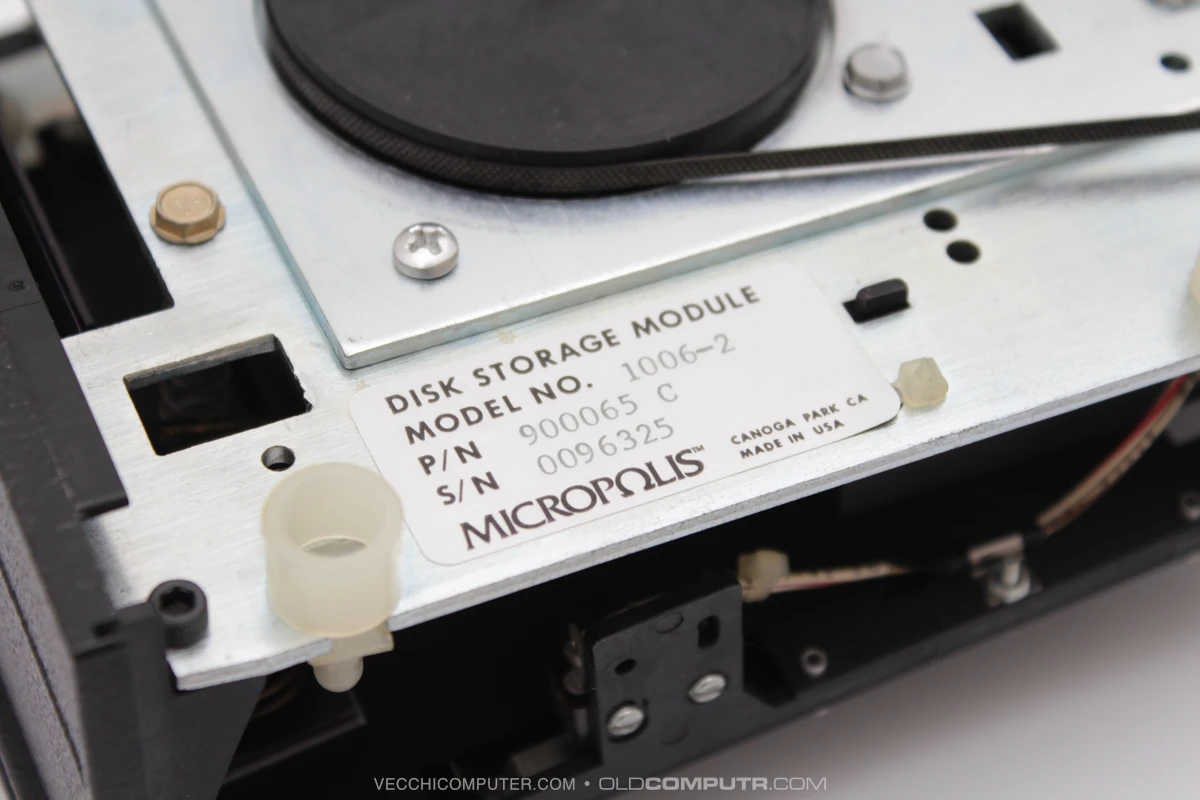
Shugart drive on the left, Micropolis drive on the right.
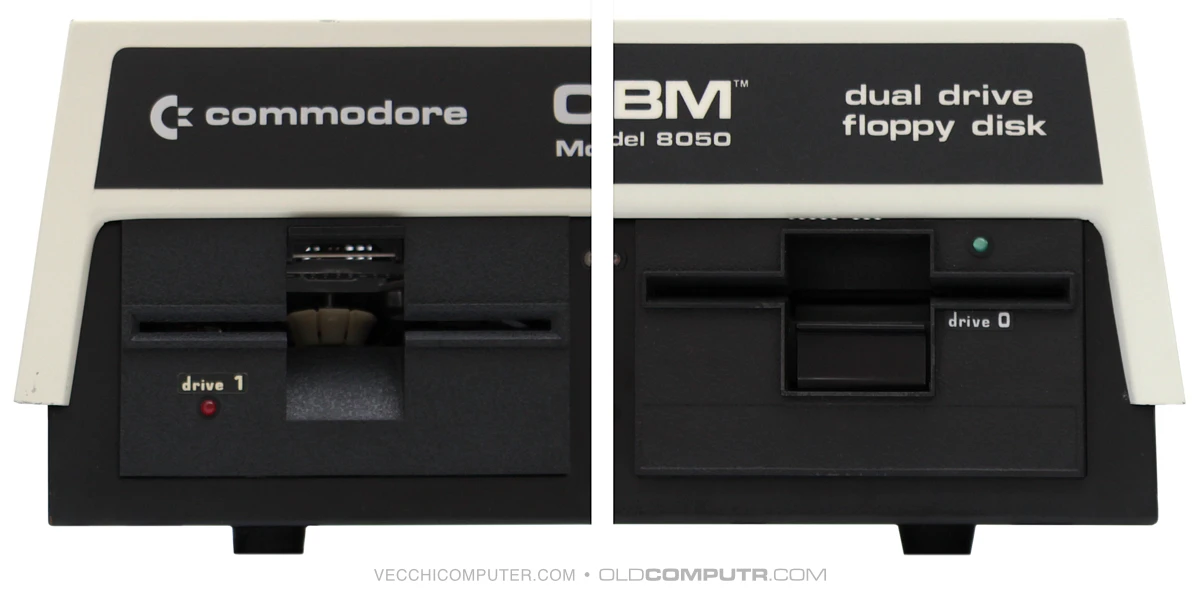
Since I was given the drive, I had not cleaned or powered it up, so I first disassembled each part and performed a thorough cleaning. Before and after:
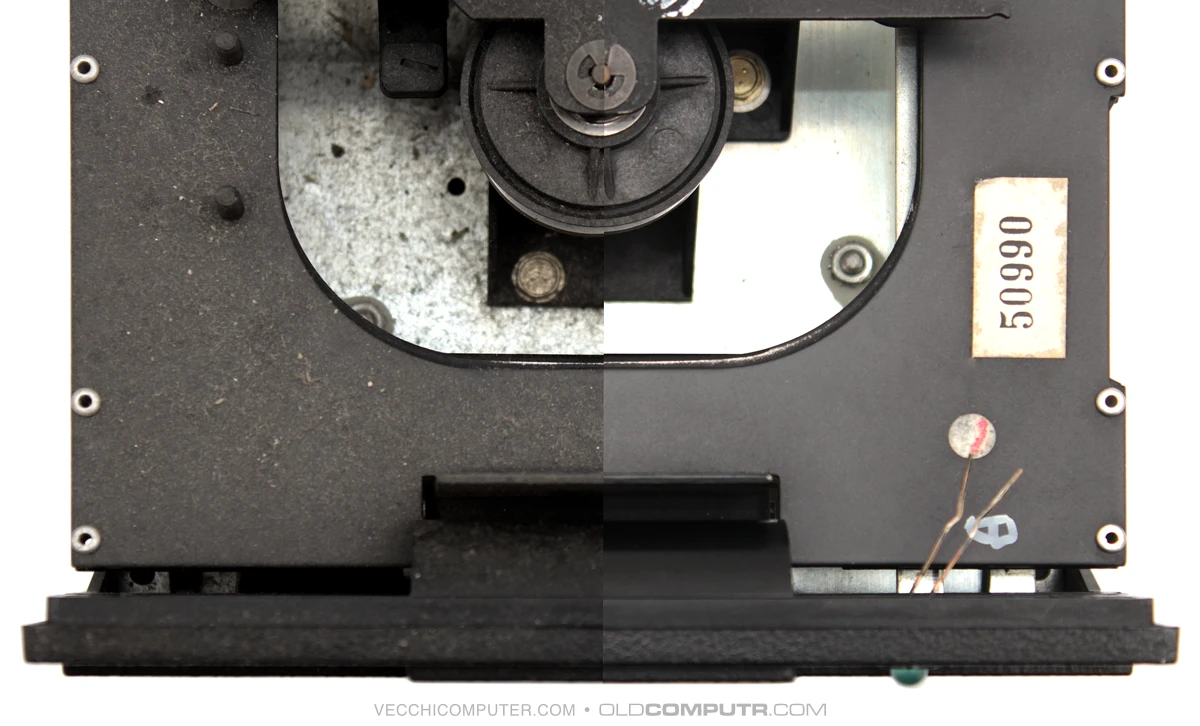
A close-up of the read/write head.
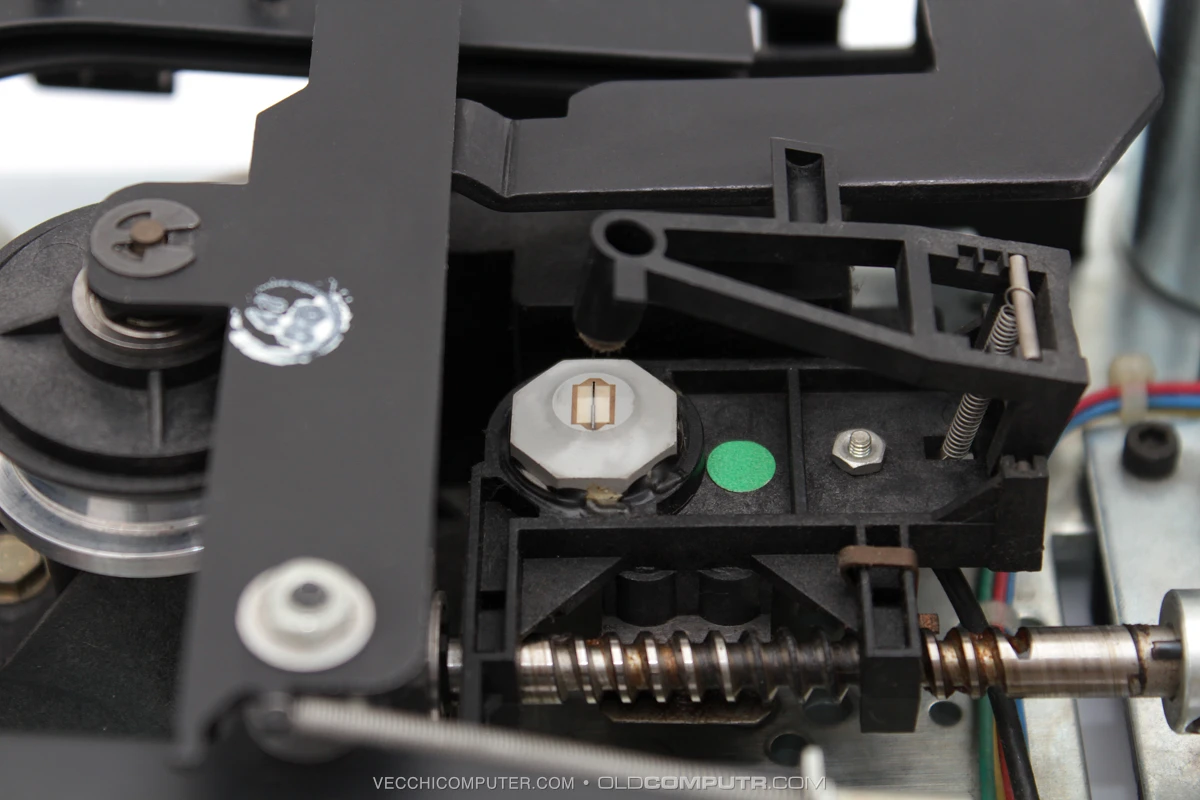
The back of the Micropolis drive, with the stepper motor in the foreground.
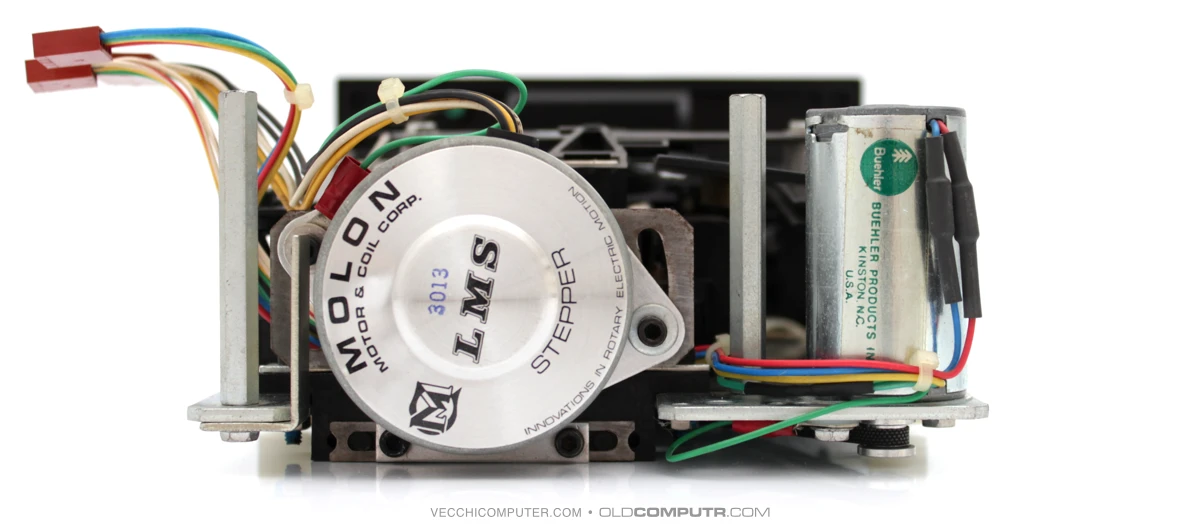
Side and rear views.

The motherboard of the drive (ASSY 8050002) contains two 6502 processors, two MOS 10750 (alternative code for RIOT 6532, probably manufactured for Atari), 6522 (VIA), 901483-03 (RRIOT), the ROM 901467-001, and the DOS 2.5 ROMs 901482-06/901482-07.
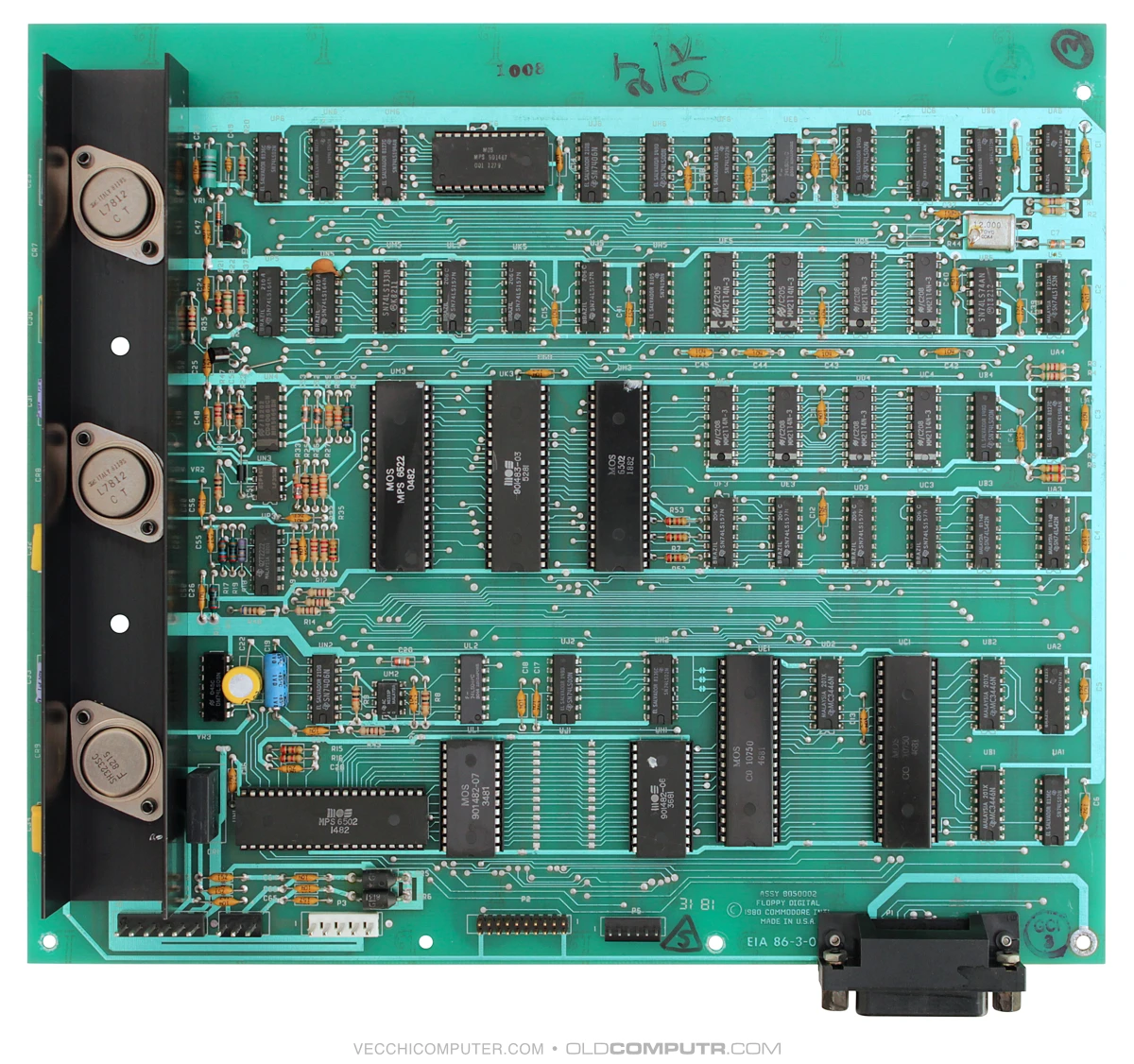
The analogue board of the drive: ASSY 8050006, ART 8050008 REV B, FAB 8050007.
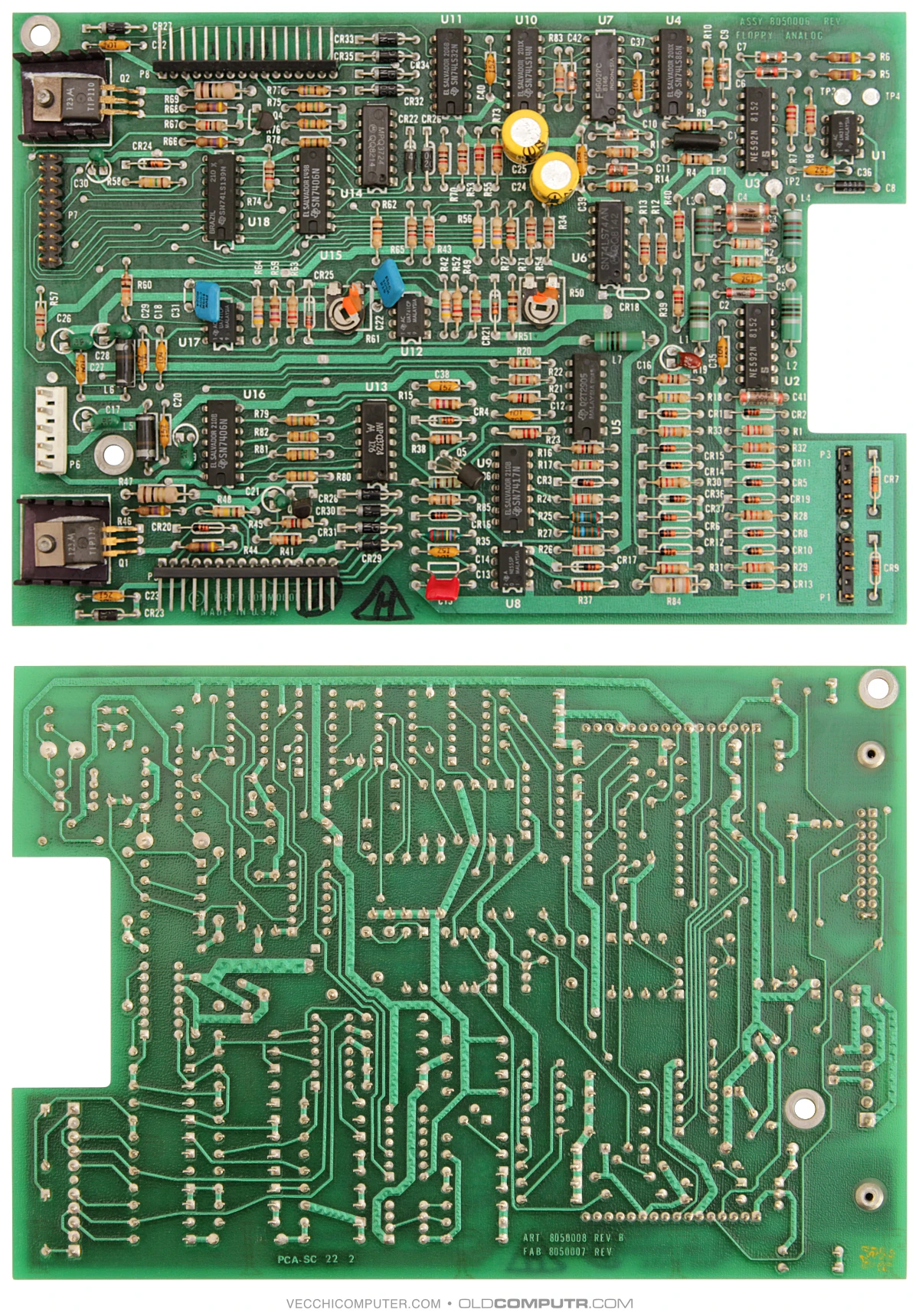
The following image shows the exploded view of the drive:
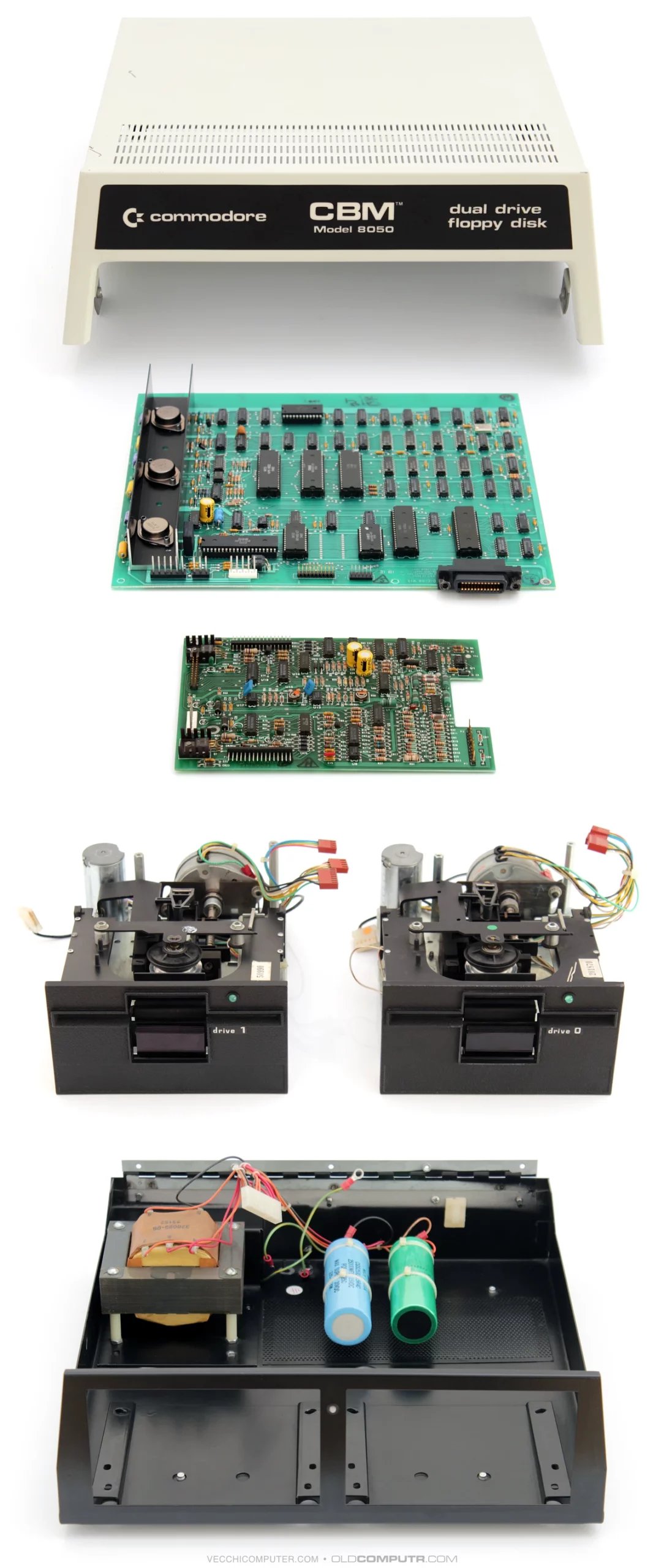
A final photo shows the drive with the lid open.
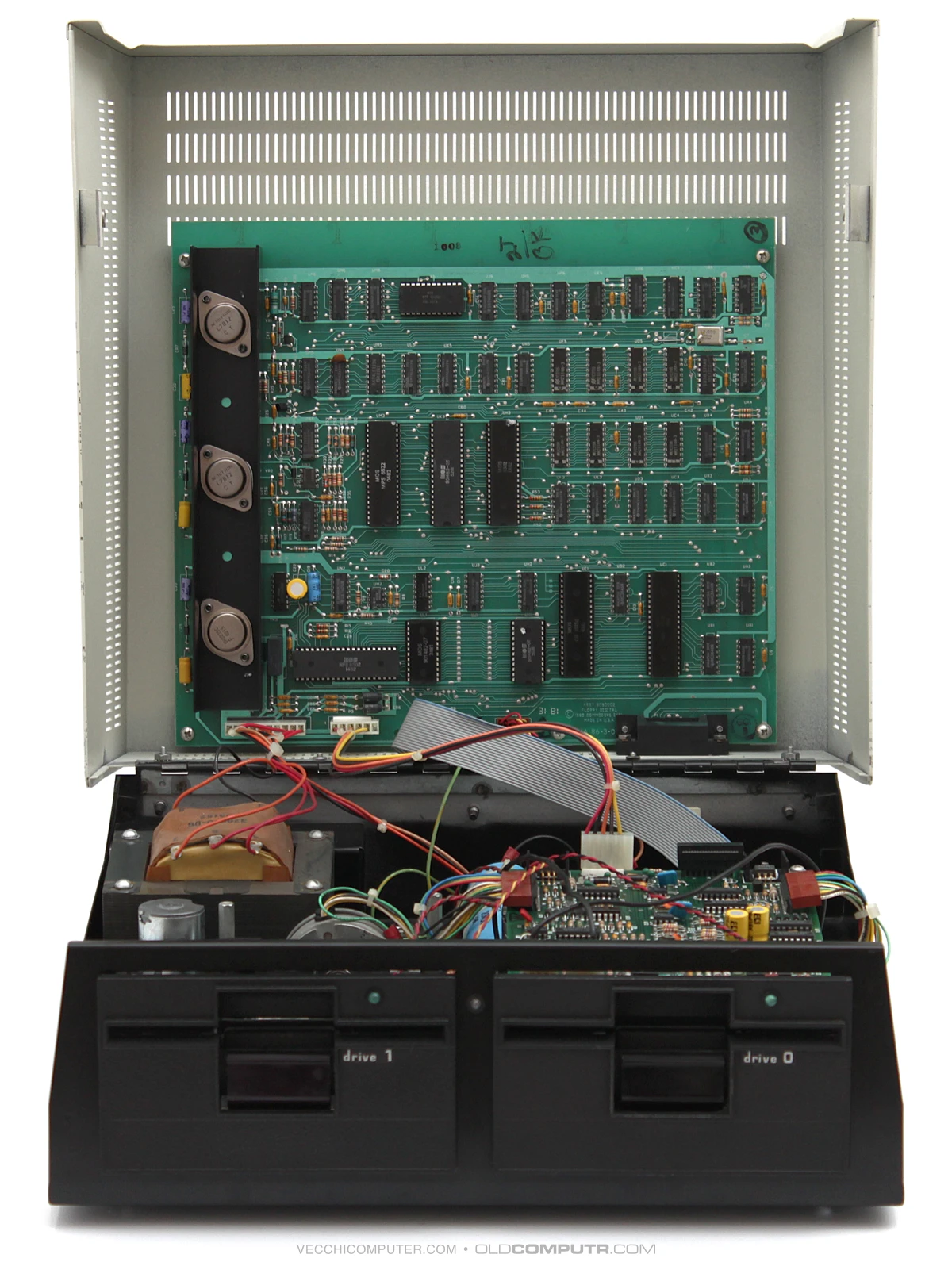
Discover more from Oldcomputr.com
Subscribe to get the latest posts sent to your email.
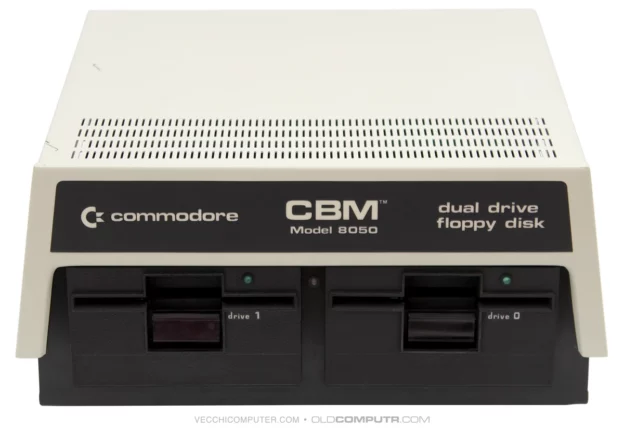
The big question now is: So they actually work?